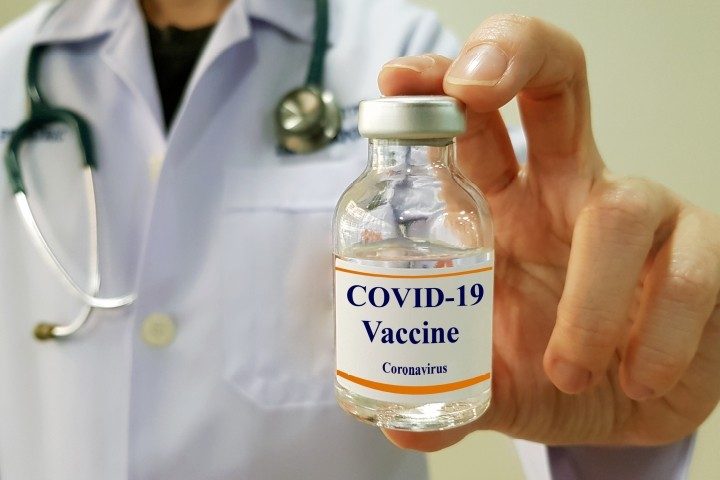
In a move that should surprise no one, the Equal Employment Opportunity Commission updated its guidance on the COVID-19 vaccines granting employers across the country the legal authority to require employees to receive the new coronavirus vaccine. The direction allows employers to accommodate the OSHA regulation for a “workplace free of known health and safety hazards” by incorporating “qualifications standards” that “include a requirement that an individual shall not pose a direct threat to the health or safety of other individuals in the workplace.” The guidance allows employees with either a disability or “sincerely held” religious beliefs, preventing them from getting inoculated, to opt-out from the vaccine at this time.
Those choosing to take the vaccine might want to seriously investigate the dangers associated with the vaccine before taking the plunge, however. In a report that has been largely ignored by the mainstream media, the CDC acknowledged that people in the U.K. and the United States have had anaphylactic reactions to the Pfizer-BioNTechCOVID-19 vaccine:
For those who may be unfamiliar with the term, the Mayo Clinic defines “anaphylaxis” as “a severe, potentially life-threatening allergic reaction.” The eight cases of “potentially life-threatening allergic reaction” between the U.K. and the United States is only part of the story. Further down in the report, the CDC recorded as of Friday, Dec 18, 112,807 people had received the vaccine, and out of those people, 3,150 of them had “Health Impact Events.” The document describes “Health Impact Events” as people being “unable to perform normal daily activities, unable to work, required care from doctor or health care professional.” That is a significant number of reactions, and this was not disclosed during the vaccine’s testing phase. The report goes on to note that “Post-authorization pharmacovigilance systems have detected and confirmed 6 anaphylaxis cases following vaccination…. Persons with anaphylaxis following COVID-19 vaccination should not receive additional doses of COVID-19 vaccine,” recommending “Consultation with allergy/immunology experts to provide guidance on evaluation of persons following anaphylaxis to COVID-19 vaccine.”
As a person suffering from severe allergies due to chemical exposure from work, this writer understands that many of the people taking the COVID-19 vaccine, whether they suffer immediate reactions or not, may rue the day they accepted that needle.
Not only is the mainstream media ignoring this report, but it is also burying the implications of it, as did the CDC. According to a CNN article from December 17, the FDA is advising people with “a known history of a severe allergic reaction to any component of the Pfizer/BioNTech vaccine” not to get one. This would lead one to conclude that the 3,150 people suffering “Health Impact Events” did not have a known history of allergies to the vaccine’s components, but still had an adverse reaction to it. In the words of Professor Stephen Evans, professor of pharmacoepidemiology, London School of Hygiene & Tropical Medicine:
Allergic reaction occurs with quite a number of vaccines, and perhaps even more frequently with drugs. So, it is not unexpected.
The Pfizer data showed that about 0.6% of people had some form of allergic reaction in the trial on the vaccine, but about 0.5% on placebo. So, there was a genuine excess of allergic reaction but this was small and the true rate is not known, and there is a lot of uncertainty around that estimate.
The only thing that is contraindicated with this vaccine (meaning you mustn’t have it) is hypersensitivity to the vaccine or any of the excipients (other things in the vaccine), but some people won’t know if they have hypersensitivity to some constituents of the vaccine.
So according to Pfizer’s data, 0.6 percent of the test subjects suffered adverse reactions to the vaccine, but according to the CDC figures, the number of those suffering reactions to it was 2.78 percent. And again, these are only people without known allergies to components of the vaccine.
Perhaps this is why some of those receiving the vaccine are also asked to wear a so-called Bio-Button to provide real-time data on their reaction to the vaccine. The button, manufactured by Biointellisense, communicates via Bluetooth with the volunteer’s smartphone through an app that monitors their bodily functions and allows the company to track them.
Taped to the patient’s chest, the device “measures and transmits data about heart rate, temperature, respiratory rate, and a certain degree of movement,” according to CBS News. The information allows the company and the patient’s doctor to discover any adverse reactions to the vaccine.
Dr. Richard Zane, chief innovation officer at UCHealth and Chief of Emergency Services at UCHealth Hospital, praised the device, noting that patients “could develop complications of the vaccine that could be interpreted as COVID, and they could develop COVID that could be interpreted as complications from the vaccine, and we can differentiate between the two.”
CBS noted that these devices are “really a future in health care. Hospitals and other health care facilities can use them to track people with a variety of diseases. Patients released from the hospital with COVID sometimes have to come back as symptoms fall and rise. Putting BioButtons or similar devices on them can help hospitals intervene when they have problems.”
Dr. Zane continued, “We’re really much broader. We’re thinking about patients with difficult to control diabetes, heart failure, heart disease, hypertension, kidney disease. We envision that people in skilled nursing facilities will all be wearing a device like this all the time, let alone after they’ve been vaccinated.”
Will vaccines and Bio-Buttons be required for everyone so that an “individual shall not pose a direct threat to the health or safety of other individuals in the workplace”?



